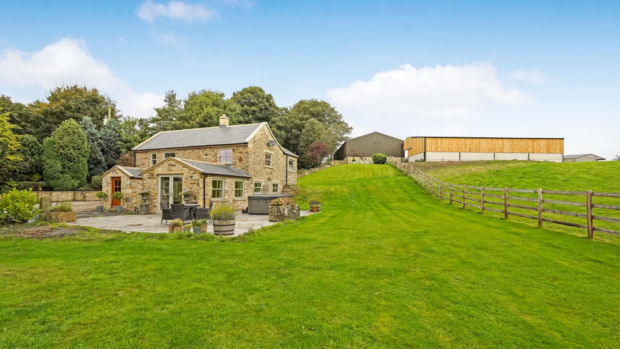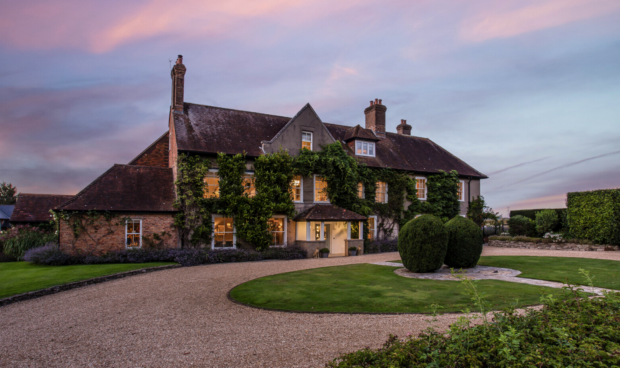From clean troughs to full haynets, Carla Passino finds out how to wow prospective buyers at their first viewing of your equestrian property
It’s surprising how, despite estate agents’ tips (and seven seasons of Channel 5’s House Doctor), vendors can sometimes forget to prep their home for viewings. But making the wrong impression can result in fewer, lower offers or even scupper a sale altogether.
1. The drive
People first see your home from the outside, so boosting kerb appeal is a key step that you should tackle as soon as you take the decision to sell. The drive is the perfect place to start.
“Often country homes have a gravelled drive and a lorry load of shingle the day before taking marketing photographs can lift the picture 100%,” explains Zoe Napier of Zoe Napier Country & Equestrian.
2. The paddocks
Tidying up and mucking out the paddocks also makes a huge difference for little effort.
“It is surprising how a morning with a strimmer or a topper can change the appearance of the paddocks,” says Liz Langford of Fox Grant.
However, the jury is out among agents as to whether it is worth investing in new fencing. On the one hand, sorry-looking fences immediately catch buyers’ eyes and put them off. On the other, fencing is very expensive and tastes vary wildly — some people prefer plastic-covered, high-tensile rails while others like post-and-rail or hedges.
Unless your fences are in very poor condition that can only be fixed by replacement, your best bet is to make sure they are safe and well maintained. “In most cases, a coat of creosote or wood conditioner is enough to make a good impression,” says Katherine Watters, a property search agent at The Buying Solution.
3. The yard
The yard should be swept and tidy, with tools and clutter stored away.
“Don’t clear the decks completely, as potential buyers will want to see a working yard, but remove old feed bags and make sure the muck heap is tidy,” Katherine says.
4. The stables
To make the stables look their best, consider investing in a paint job.
“A new lick of paint or wood stain can really freshen up timber buildings and joinery, whereas paint chipping off doors or rotting stable doors just signals money to spend,” points out Louise Harrison of Savills.
Katherine adds: “At the very least, it is worth cleaning the stable walls and clearing out cobwebs, dust and grime. Clean the fronts of the doors and touch up any large scuff and kick marks.”
Full haynets are not strictly necessary but it is often a good idea to have nets up for stabled horses during a viewing — not only does it keep the horses quiet but gives a settled impression.
And although buyers don’t necessarily expect to find a pristine yard at an early-morning viewing, “a lovely clean bed” is very appealing to the eye, says Liz.
By contrast, stables that look like they have not been mucked out in a while can make people think that other parts of your property are not well cared-for either, and this ultimately has a knock-on effect when it comes to an offer.
5. The arena
Similarly, if you have an arena, you should ensure it is in good condition. Harrow it, keep it muck-free and, suggests Katherine, “leave the gate ajar, so that the potential buyer feels comfortable to go in if they want to look at the surface”.
If possible, adds David Rumsey of Pelhams, have a few jumps set up to make it even more attractive.
6. The horses
“Vendors might have the grass cut, the equestrian centre looking good, the horse trough looking clean but then the horses look in really bad shape,” Bobby Hall of The Buying Solution adds.
“People’s eyes are drawn to horses with untidy manes and this can give a bad first impression.”
However, even the best equine specimens should be kept in the stables — rather than displayed in the arena — during a viewing.
“It’s great to have the horse in because it makes people realise the stable’s true size,” says Liz. Plus, adds Bobby, “having horses stabled is probably the safest option, as less can go wrong”.
7. Pets
“It is always a good idea to keep pets out of the way,” says Katherine. “Most people are good with dogs, but it is much easier to make introductions without one jumping up and down or barking.”
Savills’ Louise has even heard of a hairy run-in between a buyer’s dog and a vendor’s cat that scuppered a viewing. On the other hand, she advises, your marketing material should always show horses in the paddocks and the arena, as this really helps bring a property to life.
“Use an experienced photographer, ask your agent to prepare a ‘shot list’ and make sure you have help on standby to ride and lead horses around the property,” she suggests.
8. The house
Although most equestrian buyers tend to be more interested in the yard than in the house, a few measures can also help make your interiors more attractive and pave the way to a quicker sale.
“Declutter and paint rooms in a neutral colour as this can actually give a greater feeling of space,” says Liz. “Air the house, remove dog beds and, if you smoke, try to not smoke indoors — a lot of buyers can be put off by stale smoke and the smell of dogs.”
Many people aren’t happy to smell horse, either.
“Fresh flowers, diffusers and scented candles can help neutralise or get rid of horsey and doggy odours,” recommends Louise. “And if the property has been vacant for a while, it’s worth lighting the fire where you can to disperse any musty or damp smells.”
Like this? You might also enjoy reading these:
Is hacking your priority? Add these dream properties to your wish list
Looking to escape the rat race? 4 remote equestrian properties for sale
9. Disputes
Another critical element is to ensure that any issues — such as tenancy disputes — are solved before putting your house on the market and that staff and liveries, if you have any, are on board with your decision to sell, or this could result in problems during a viewing.
For example, Liz once faced a difficult situation when a livery client turned out a young horse into the indoor arena without letting her know about it so when she and the prospective buyer opened the door, they were nearly flattened.
And, adds Katherine, “if any staff know that the property is for sale, make sure they look smart and smile — but preferably have the viewing while they are at lunch or have left for the day because there’s nothing is worse than four pairs of eyes following the potential buyer around.” Indeed, it’s even advisable to make yourself scarce and let your agent handle the viewing.
“It’s helpful for owners to be on standby for questions but buyers generally prefer to look around with an agent on the first viewing,” she says.
10. Price
However, no amount of cosmetic work and relationship management will help you clinch a sale unless the guide price for your property is correct.
“An overinflated price can do a lot of harm,” Katherine says. “When you are choosing an agent, make sure you go with the one who is most realistic on price, not just the one with the highest valuation and lowest fee. You want a potential purchaser to view the property, like what they see and think the guide price is justified. That is the key to a quick sale.”




